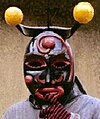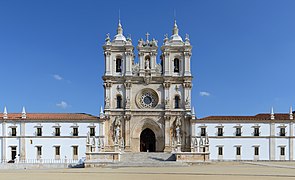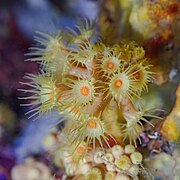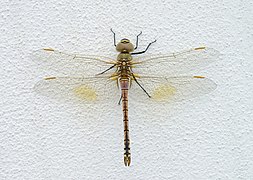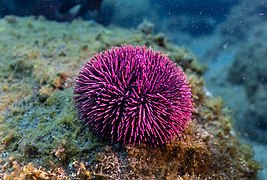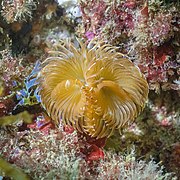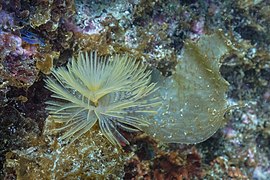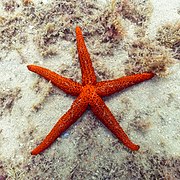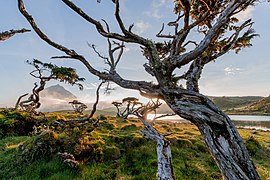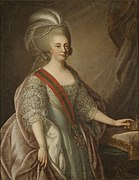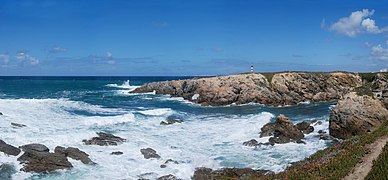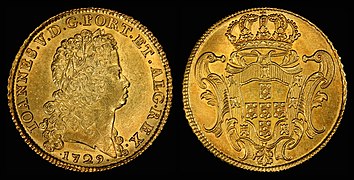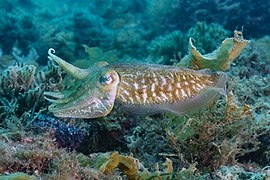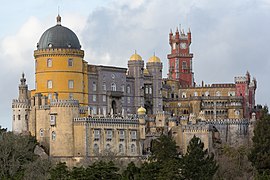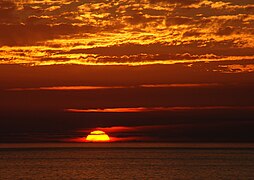Portal:Portugal
Welcome to the Portugal portal  Portugal, officially the Portuguese Republic, is a country in the Iberian Peninsula in Southwestern Europe. Featuring the westernmost point in continental Europe, to its north and east is Spain, with which it shares the longest uninterrupted border in the European Union; to the south and the west is the North Atlantic Ocean; and to the west and southwest lie the Macaronesian archipelagos of the Azores and Madeira, which are two autonomous regions of Portugal. Lisbon is the capital and largest city, followed by Porto, which is the only other metropolitan area. Founded in 1143, with its current borders established in 1297, Portugal is the oldest nation state in Europe and among the oldest in the world. Its territory has been continuously inhabited since prehistoric times, with the earliest signs of settlement dating to 5500 BCE. Celtic and Iberian peoples arrived in the first millennium BCE, with Phoenician and later Punic influence reaching the south during the same period. The region came under Roman control in the second century BCE, followed by a succession of Germanic peoples and the Alans from the fifth to eighth centuries CE. Muslims conquered most of the Iberian Peninsula in the eighth century CE, but were gradually expelled by the Christian Reconquista over the next several centuries. Modern Portugal began taking shape during this period, initially as a county of the Christian Kingdom of León in 868, and ultimately as an independent Catholic kingdom with the Treaty of Zamora in 1143. After consolidating its territorial and political integrity in 1297, the Kingdom of Portugal pioneered a series of ambitious commercial and maritime expeditions that catalyzed the Age of Discovery in the late 15th century. Portuguese supremacy in seafaring and nautical technology helped achieve the world's first global maritime empire, which spanned five continents and lasted into the late 20th century. Reaching its economic and political height in the late 16th century, Portugal faced internal divisions and growing rivalry and conflict with other European powers. The Lisbon earthquake of 1755, French occupation in 1807–1808 during the Napoleonic Wars, and the subsequent independence of Brazil in 1822 further hastened the country's decline. A civil war between liberal constitutionalists and conservative absolutists over royal succession ensued from 1828 to 1834. The 1910 revolution deposed Portugal's monarchy and established the democratic but unstable Portuguese First Republic, later superseded by the authoritarian regimes of Ditadura Nacional (National Dictatorship) and Estado Novo (New State). Democracy was restored after the Carnation Revolution of 1974, which also ended the Portuguese Colonial War by allowing the remaining Portuguese territories in Africa to gain independence. (Full article...) Selected article -Belém Tower (Portuguese: Torre de Belém, pronounced [ˈtoʁɨ ðɨ βɨˈlɐ̃j]; literally: Bethlehem Tower), officially the Tower of Saint Vincent (Portuguese: Torre de São Vicente) is a 16th-century fortification located in Lisbon that served as a point of embarkation and disembarkation for Portuguese explorers and as a ceremonial gateway to Lisbon. This tower symbolizes Portugal's maritime and colonial power in early modern Europe. It was built during the height of the Portuguese Renaissance, and is a prominent example of the Portuguese Manueline style, but it also incorporates other architectural styles, such as the minarets, which are inspired by Moorish architecture. The structure was built from lioz limestone and is composed of a bastion and a 30-metre (100 ft), four-storey tower. Since 1983, the tower has been a UNESCO World Heritage Site, along with the Jerónimos Monastery. It is often portrayed as a symbol of Europe's Age of Discoveries and as a metonym for Portugal or Lisbon, given its landmark status. It has incorrectly been stated that the tower was built in the middle of the Tagus and now sits near the shore because the river was redirected after the 1755 Lisbon earthquake. In fact, the tower was built on a small island in the Tagus river near the Lisbon shore. (Full article...) This is a Featured article, which represents some of the best content on English Wikipedia.
Dona Maria Amélia (1 December 1831 – 4 February 1853) was a princess of the Empire of Brazil and a member of the Brazilian branch of the House of Braganza. Her parents were Emperor Dom Pedro I, the first ruler of Brazil, and Amélie of Leuchtenberg. The only child of her father's second marriage, Maria Amélia was born in France after Pedro I abdicated the Brazilian throne in favor of his son Dom Pedro II. Before Maria Amélia was a month old, Pedro I went to Portugal to restore the crown of the eldest daughter of his first marriage, Dona Maria II. He fought a successful war against his brother Miguel I, who had usurped Maria II's throne. Only a few months after his victory, Pedro I died from tuberculosis. Maria Amélia's mother took her to Portugal, where she remained for most of her life without ever visiting Brazil. The Brazilian government refused to recognize Maria Amélia as a member of Brazil's Imperial House because she was foreign-born, but when her elder half-brother Pedro II was declared of age in 1840, he successfully intervened on her behalf. (Full article...) General imagesThe following are images from various Portugal-related articles on Wikipedia.
Selected quote -"I'm not a total atheist, everyday I try to find a sign of God, but unfortunately I can't find any."
Não sou um ateu total, todos os dias tento encontrar um sinal de Deus, mas infelizmente não o encontro. This is a Good article, an article that meets a core set of high editorial standards.
Otelo Nuno Romão Saraiva de Carvalho, GCL (Portuguese pronunciation: [ɔˈtɛlu sɐˈɾajvɐ ðɨ kɐɾˈvaʎu]; 31 August 1936 – 25 July 2021) was a Portuguese military officer who was the chief strategist of the 1974 Carnation Revolution and who later became a terrorist leader. After the Revolution, Otelo assumed leadership roles in the first Portuguese Provisional Governments, alongside Vasco Gonçalves and Francisco da Costa Gomes, and as the head of military defense force COPCON. In 1976, Otelo ran in the first Portuguese presidential election, in which he placed second with the base of his support coming from the far-left. Otelo was tried and sentenced for being a leading member of the terrorist group Forças Populares 25 de Abril, which killed 19 people in several terrorist attacks. The Constitutional Court reverted the sentence due to unconstitutionality. (Full article...) Selected Biography -Maria do Carmo Miranda da Cunha GCIH, OMC (9 February 1909 – 5 August 1955), known professionally as Carmen Miranda (Portuguese pronunciation: [ˈkaʁmẽj miˈɾɐ̃dɐ]), was a Portuguese-born Brazilian singer, dancer, and actress. Nicknamed "The Brazilian Bombshell", she was known for her signature fruit hat outfit that she wore in her American films. As a young woman, Miranda designed clothes and hats in a boutique before making her debut as a singer, recording with composer Josué de Barros in 1929. Miranda's 1930 recording of "Taí (Pra Você Gostar de Mim)", written by Joubert de Carvalho, catapulted her to stardom in Brazil as the foremost interpreter of samba. (Full article...) Selected picture - The Hieronymites Monastery (Mosteiro dos Jerónimos).
Did you know -
Portugal topicsPortugal lists
SubcategoriesRecognized content
Featured articlesFormer featured articlesFeatured listsFormer featured listsGood articles
Former good articlesDid you know? articles
Featured pictures
Former featured portalsIn the News articles
Main page featured articles
Picture of the day pictures
Featured topicsNew articlesThis list was generated from these rules. Questions and feedback are always welcome! The search is being run daily with the most recent ~14 days of results. Note: Some articles may not be relevant to this project.
Rules | Match log | Results page (for watching) | Last updated: 2024-11-02 21:45 (UTC) Note: The list display can now be customized by each user. See List display personalization for details.
Things you can doRelated PortalsRelated WikiProjects
Associated WikimediaThe following Wikimedia Foundation sister projects provide more on this subject:
Discover Wikipedia using portals |


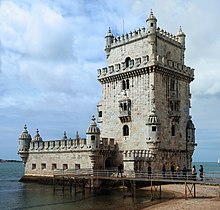












![Image 12Maios celebration in Madeira island [1] (from Culture of Portugal)](http://upload.wikimedia.org/wikipedia/commons/thumb/e/e1/2011-03-05_03-13_Madeira_045_Santana_%285543431418%29.jpg/120px-2011-03-05_03-13_Madeira_045_Santana_%285543431418%29.jpg)





























